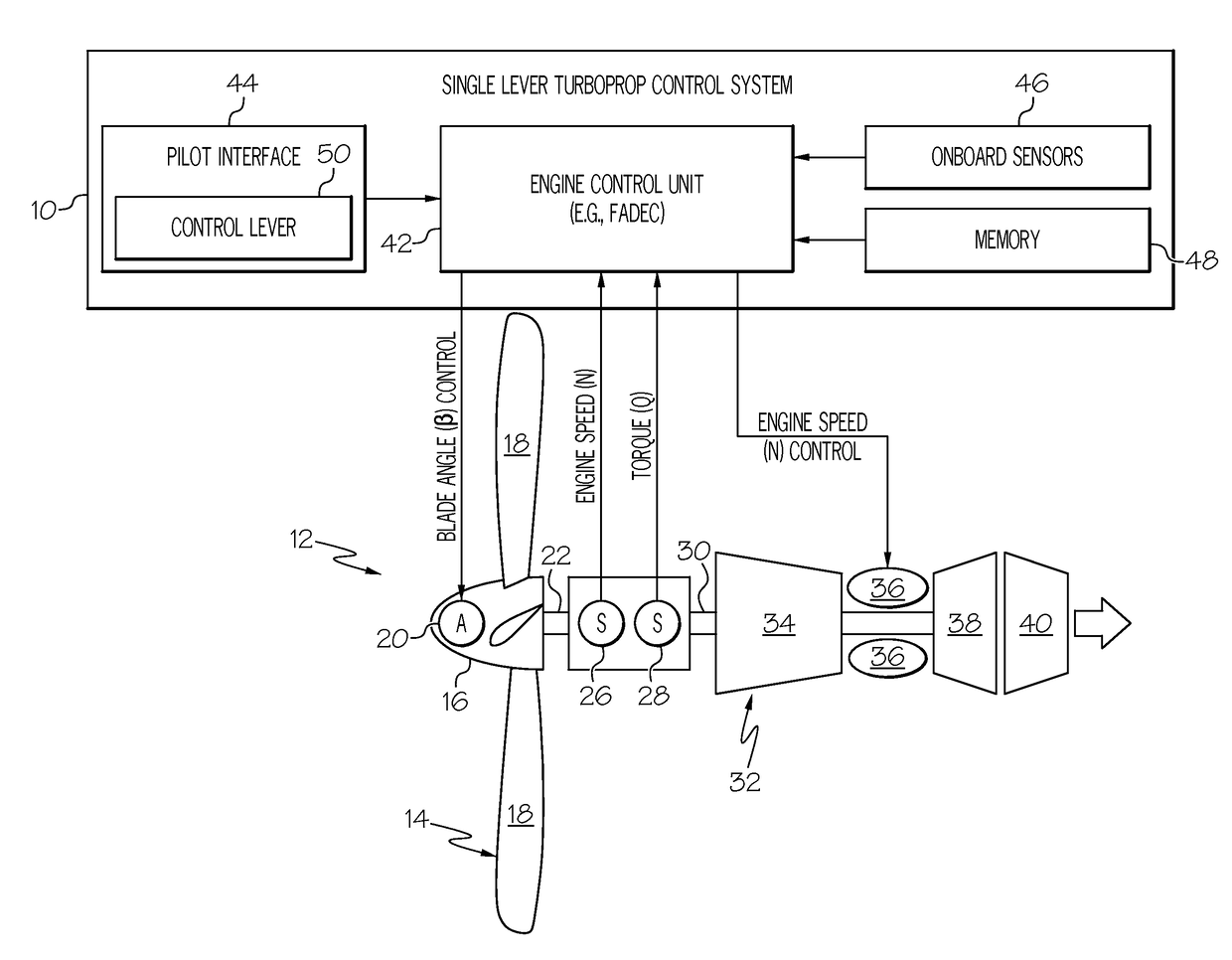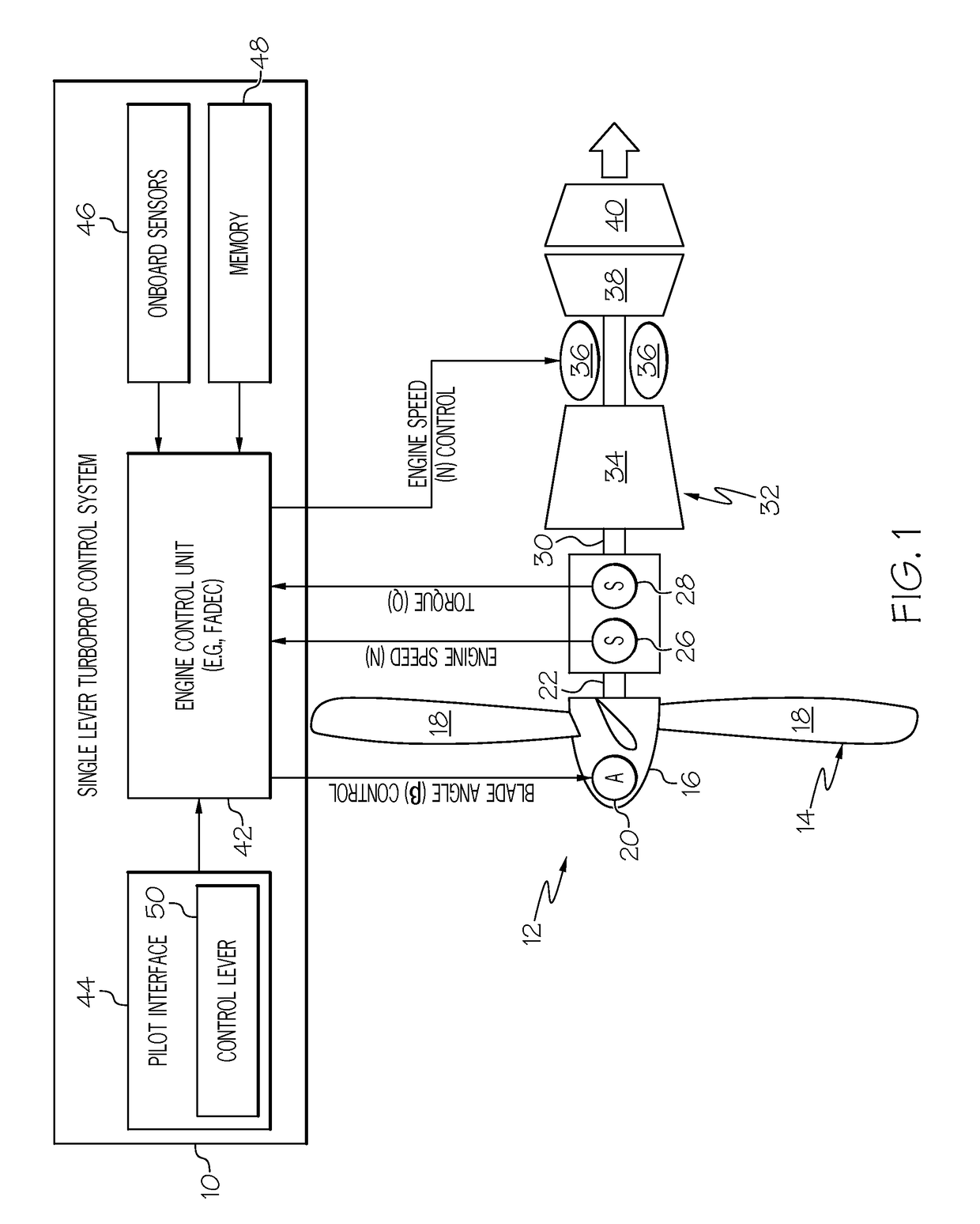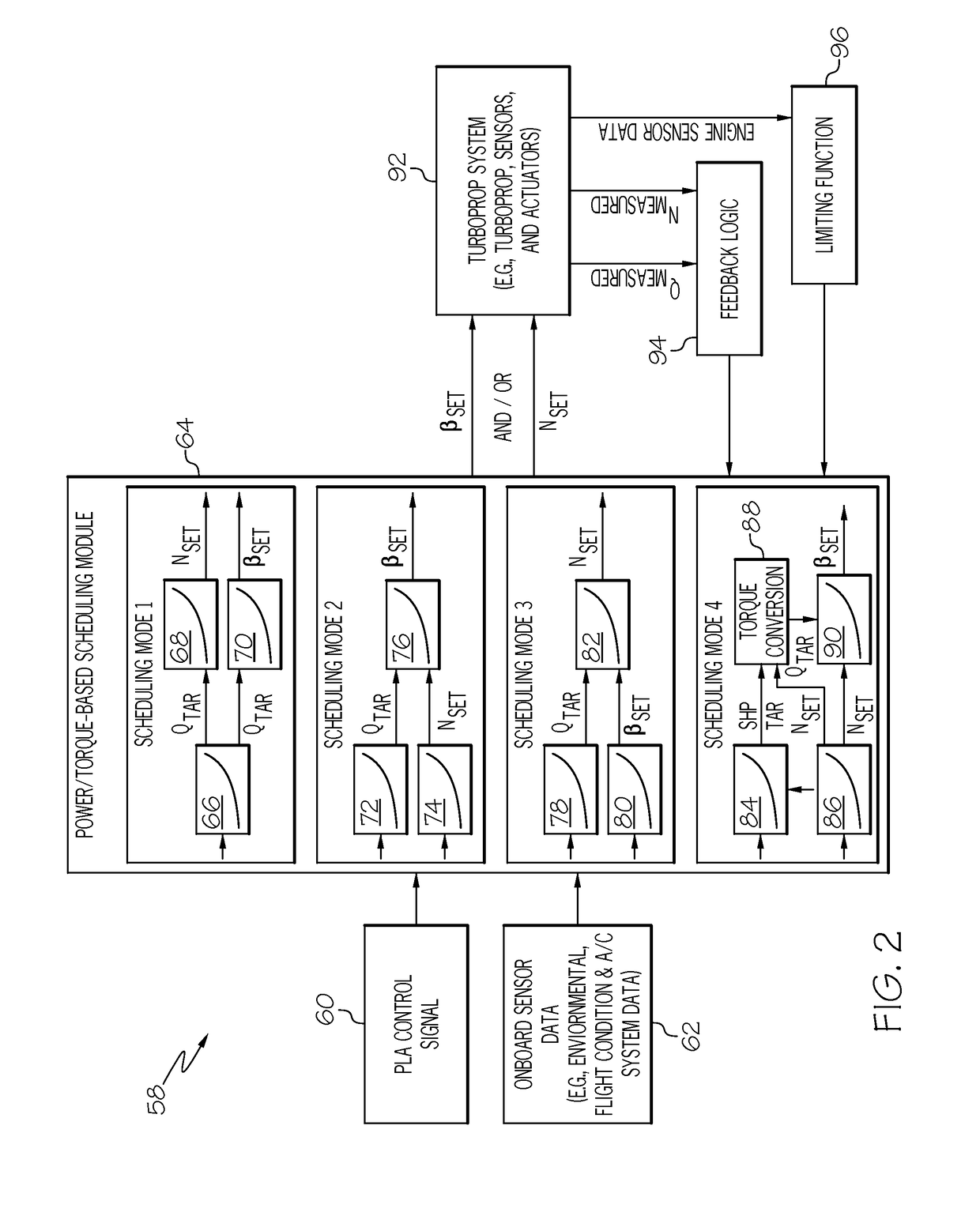Single lever turboprop control systems and methods utilizing torque-based and power-based scheduling
- Summary
- Abstract
- Description
- Claims
- Application Information
AI Technical Summary
Benefits of technology
Problems solved by technology
Method used
Image
Examples
Embodiment Construction
[0010]The following Detailed Description is merely exemplary in nature and is not intended to limit the invention or the application and uses of the invention. Furthermore, there is no intention to be bound by any theory presented in the preceding Background or the following Detailed Description.
[0011]As briefly described above, turboprop engines are traditionally operated utilizing a dual lever control system, which includes a first lever for adjusting propeller blade angle (β) and a second, independent lever for adjusting engine rotational speed (N). Recently, certain turboprop control systems have been proposed that enable a pilot to adjust both propeller blade angle (β) and engine rotational speed (N) utilizing a single control lever located in the aircraft cockpit. During operation, such a single lever turboprop control system may convert or “schedule” the angular position of the control lever to a corresponding propeller blade angle setpoint (βset) and a corresponding rotation...
PUM
 Login to View More
Login to View More Abstract
Description
Claims
Application Information
 Login to View More
Login to View More - R&D
- Intellectual Property
- Life Sciences
- Materials
- Tech Scout
- Unparalleled Data Quality
- Higher Quality Content
- 60% Fewer Hallucinations
Browse by: Latest US Patents, China's latest patents, Technical Efficacy Thesaurus, Application Domain, Technology Topic, Popular Technical Reports.
© 2025 PatSnap. All rights reserved.Legal|Privacy policy|Modern Slavery Act Transparency Statement|Sitemap|About US| Contact US: help@patsnap.com



